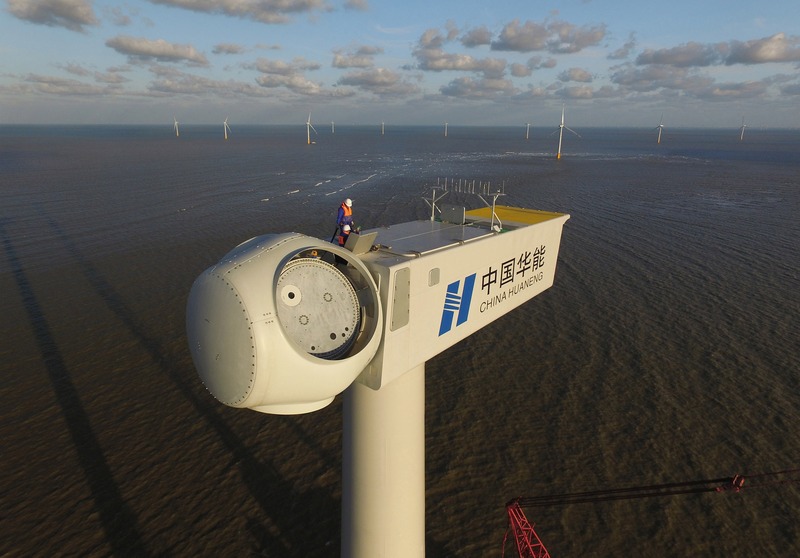6 Offshore Wind Markets That Will Need Skilled Workers


Offshore wind is set to create millions of new jobs within the next decade. However, the challenge lies in finding the people to fill the positions. Manpower is where the industry remains at its most vulnerable, the looming skills shortage threatening to cripple the sector when it’s most needed. The surge in installations will be “impossible to staff”, according to research firm McKinsey.
Countries with ambitious capacity goals will feel the squeeze the most. Over the next decade, numerous offshore projects are scheduled to enter their construction phase, many of which are crucial for hitting net zero targets. As the demand for frontline workers rises, an already limited talent pool will be strained.
For the offshore wind industry, the shortage is a serious obstacle. For qualified professionals, on the other hand, this is an opportunity to enter renewables during a phase of rapid growth. Nations with large capacity targets are set to become employment hotspots for those looking to enter offshore wind.
Japan
Off the shore of Japan’s Akita Prefecture lies the country’s first operational commercial wind farm. The Akita Noshiro farm spans a total of 33 bottom-fixed turbines across Akita Port and Noshiro Port. Together, it contributes 140MW to the north-east Asian nation’s offshore wind capacity.
This is a huge step for Japan’s burgeoning offshore wind market. However, in order to hit an ambitious target of 45GW by 2040, the country must first overcome a number of significant challenges; creating an offshore wind workforce is top of this list. The shortage is further compounded by an ageing workforce and a traditional company culture that makes companies resistant to adapting modern skills development practices it will need to quickly scale talent.
United States
If all goes according to plans laid out by the Biden administration, the United States will have enough power coming in from offshore wind for five million homes by 2035. Billions of dollars in leases have already been secured to build the farms that will support the country’s shift to clean energy. Thousands of job opportunities have been promised as more projects line up the pipeline.
As is the case in Japan, the problem lies in filling out those roles. At present, the nascent sector employs less than one thousand workers. The United States will need between 15,000 to 58,000 workers in sectors directly involved in construction, manufacturing, and operation of the plants, plus thousands more induced impact jobs in surrounding communities.
Germany
Together with Belgium, the Netherlands, and Denmark, Germany has pledged 150 GW in offshore wind capacity by 2050. That’s half of the European Union’s collective target, and would bring clean energy to 230 million European homes. Locally, the country is pushing to unlock 82 GW from nearly 200 projects in the pipeline.
But while Germany aims for higher and higher targets, its workforce is struggling to keep pace, even showing a decline in recent years. Offshore wind employed some 24,500 employees in 2018. That number had thinned to 21,500 by 2020. To stay on track until 2040, Germany will have to employ 40,000 workers.
Australia
For Australia, offshore wind exists as part of an amalgamation of green energy hubs,bringing together wind, solar, and hydrogen energy. The country plans to become a hydrogen superpower and top exporter of hydrogen to neighbouring Asian countries.
However, doubts shadow the grand green future Australia envisions for itself. Demand for solar and hydrogen workers compete with offshore wind, and experts worry Australia is unlikely to find the manpower required to meet the demand across sectors. By 2049, it will need 73,000 workers in offshore wind. In order to become a green hydrogen major, it will need 237,000 in renewables generation and storage.
France
Compared to neighbouring European countries, France’s offshore wind capacity is a drop in the bucket. The country’s inaugural full-scale farm, the Saint-Nazaire Offshore Wind Farm, only produced electricity last June, 2022. Yet aspirations are high for the fledgling market, with announcements to build fifty more farms by 2050.
Despite France’s offshore wind industry being in its infancy, the strain is already being felt; competition for talent is stretched even thinner between onshore and offshore wind. France is currently seeking 1,000 workers for various roles. By 2030, the offshore wind industry is estimated to employ 15,000 more.
United Kingdom
The UK is the world’s most developed offshore wind sector, with over 31,000 in its employ–16 percent more than the previous year. Data also shows positive growth in the number of women in the workforce, as well as apprentices entering the field.
Despite promising figures, it will need to do even more to sustain momentum and support growth targets. A deeper dive into the recruitment data reveals a gap in certain competencies, such as digital and high-level electricity skills. There’s also an imbalance in the spread of talent. More work is concentrated near Yorkshire and Humboldt, where construction for a number projects are underway. Meanwhile, East Anglia is struggling from a skills crisis that’s holding it back from being a “superpower” region for offshore wind.
Offshore wind’s shortage problem is a global struggle, one that will persist beyond the end of the decade. Qualified workers will find no lack of opportunity waiting for them in the future’s largest producers of offshore wind.